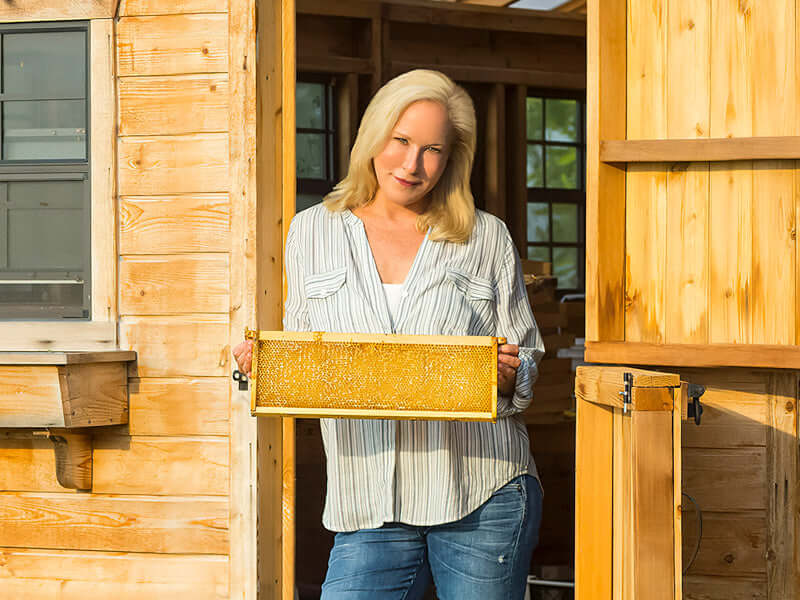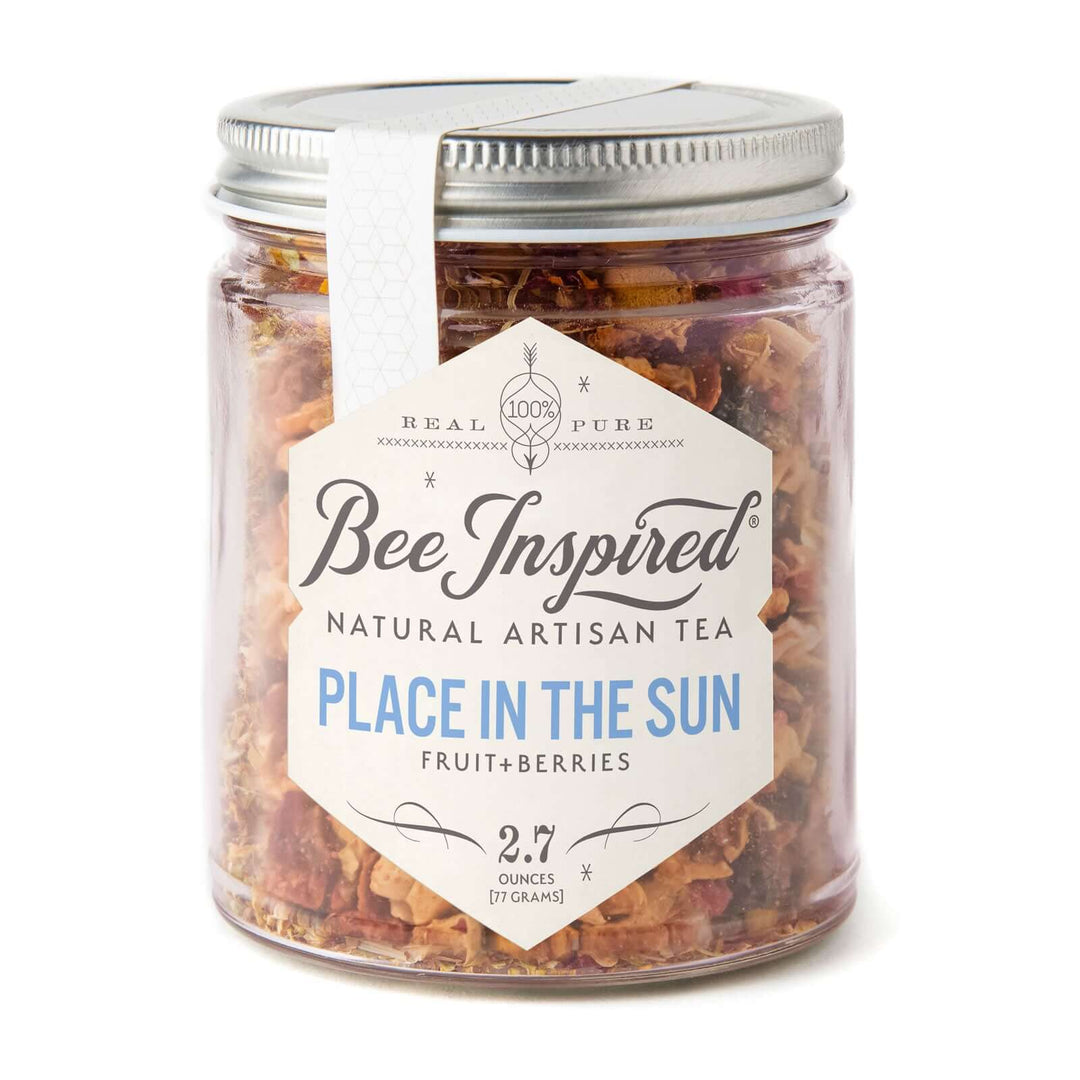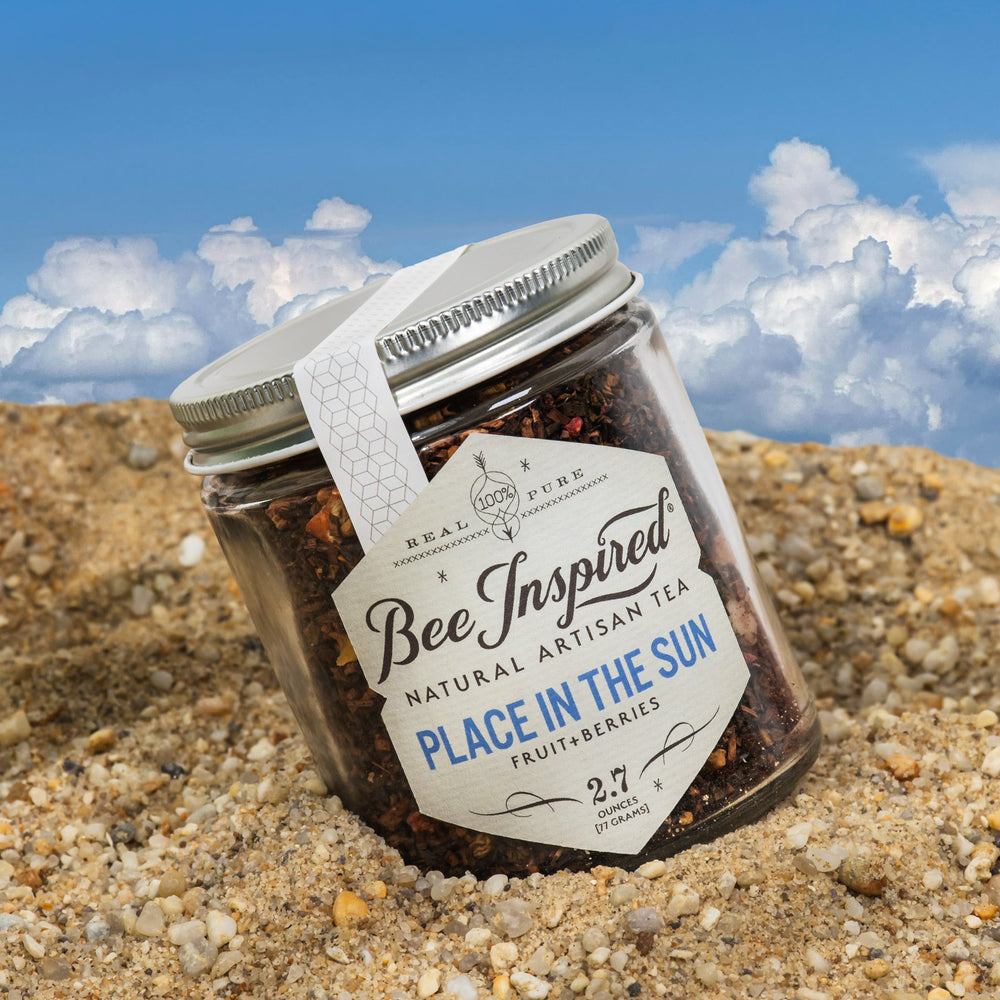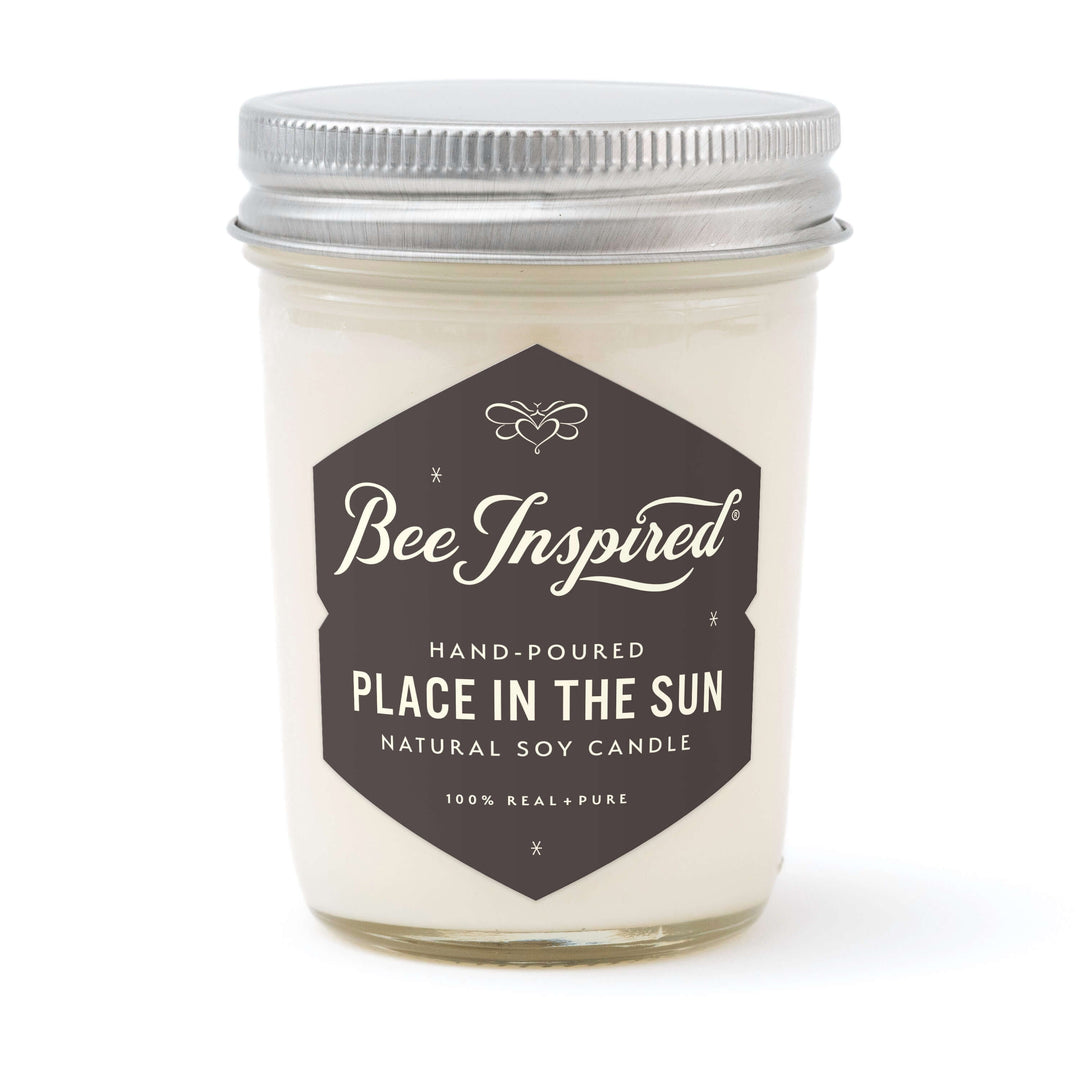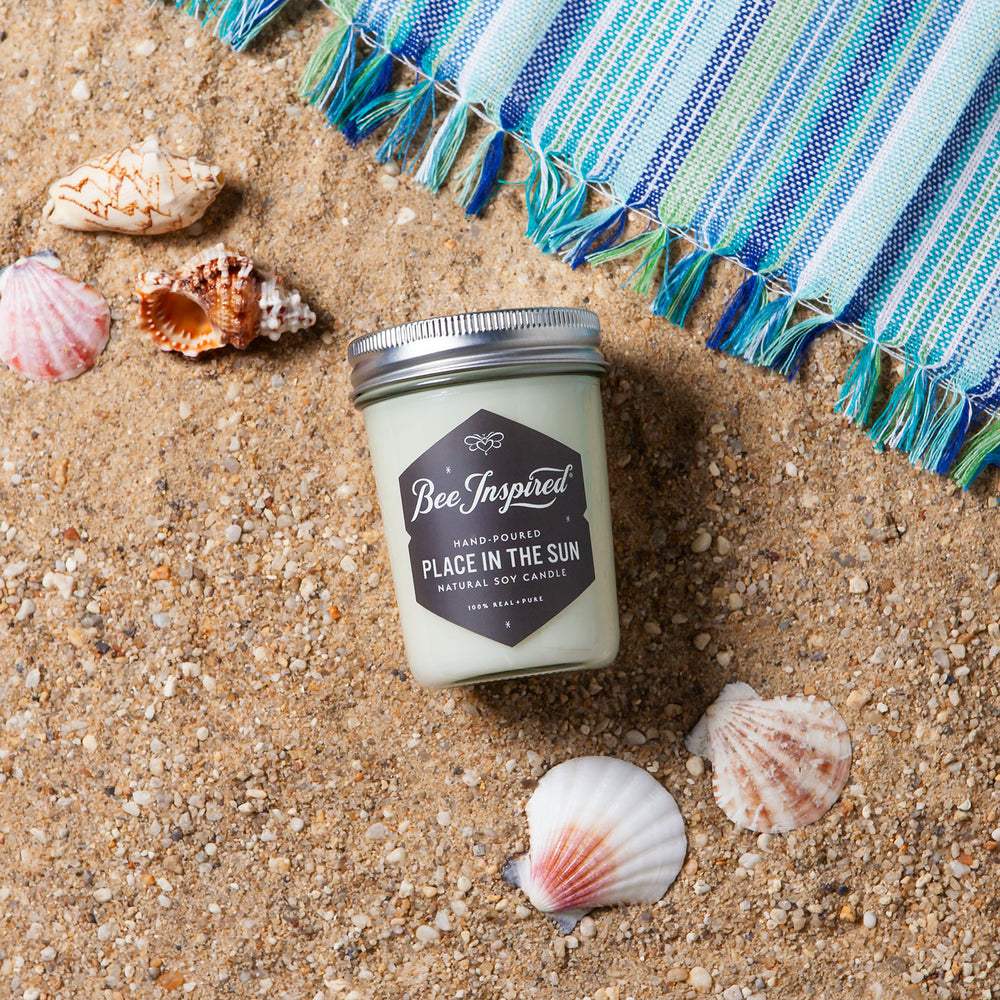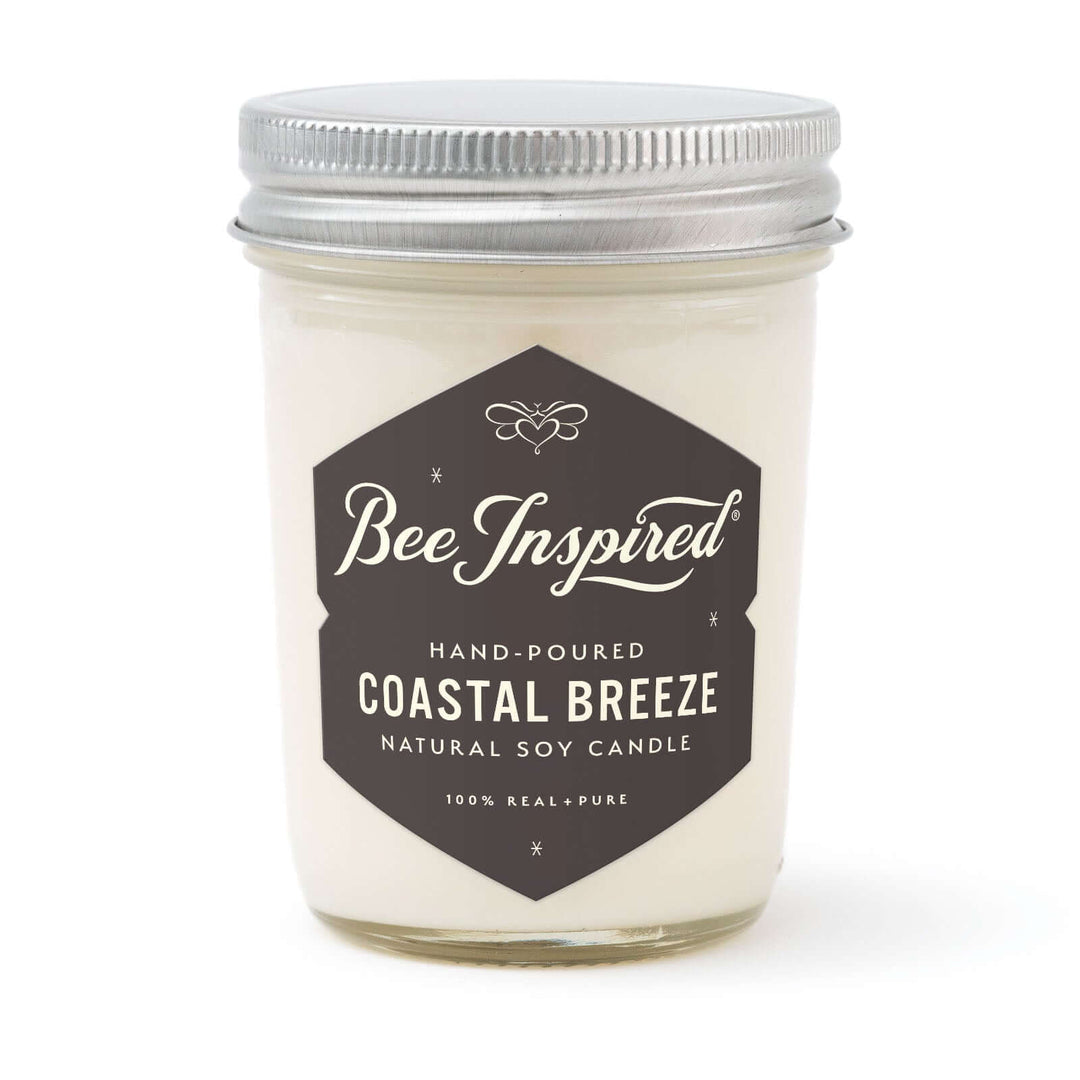What is Crystallized Honey?
Have you ever reached for your honey jar only to discover that your once-flowing golden liquid has transformed into a firm, grainy substance? This phenomenon—crystallized honey—might initially seem concerning, but it actually reveals something fascinating about honey's authenticity. Far from being a quality problem, crystallized honey often indicates you've purchased pure, unprocessed honey with its natural properties intact. Let's explore why this transformation happens and what it tells us about the honey in your pantry.
Understanding Crystallized Honey: Natural Process or Quality Issue?
Honey crystallization is one of nature’s most fascinating processes, involving glucose molecules, and a sign you’ve got the real thing—pure, raw honey with all its natural sugars and properties intact. In this comprehensive guide, we’ll explore exactly why honey crystallizes, how to manage it, and why beekeepers sometimes race against time before certain honey varieties solidify right before their eyes.
The Science Behind the Transformation of Honey Crystallization
Honey crystallization (sometimes called granulation or candying) is a natural physical process where glucose molecules in honey separate from water and form solid crystals. Honey is a supersaturated solution primarily consisting of natural sugars, mainly glucose and fructose. While many consumers mistakenly believe crystallized honey has "gone bad," this transformation is actually a hallmark of authentic, high-quality honey. All honey will crystallize over time due to the nature of its sugar-water balance.
The crystallization process occurs because honey is a supersaturated solution. It contains more sugar than should naturally dissolve in the available water—about 70% sugars and less than 20% water. This unstable condition means that over time, molecules naturally bind together and precipitate out of the solution, forming crystals while the fructose remains dissolved. These tiny crystals form as glucose separates from water, creating a semi-solid matrix. Honey is essentially a concentrated sugar solution that is resistant to fermentation or spoilage due to its low water content.
Under a microscope, you'd see these glucose crystals create a semi-solid matrix that transforms honey that is liquid into a more solid state. The process is entirely natural and doesn't affect the honey's safety, flavor, or nutritional benefits.

Raw vs. Processed Honey: Why It Matters for Crystallization
Understanding the difference between raw honey and processed honey helps explain why some honey crystallizes faster than others:
Raw Honey Characteristics:
- Unfiltered and unpasteurized
- Contains natural pollen, propolis, and microscopic beeswax particles, including pollen and beeswax particles
- These particles serve as "seed crystals" where glucose can attach
- Typically crystallizes faster than processed honey
- Crystallization is evidence of honey's natural, unprocessed state
Processed Honey Characteristics:
- Filtered under high pressure to remove particles
- Heated to pasteurization
- Fewer natural nucleation points for crystals to form
- Stays liquid longer due to processing
- Slower crystallization isn't necessarily a sign of higher quality
Many commercial brands undergo extensive processing specifically to stop honey from crystallizing, as many consumers incorrectly associate crystallization with spoilage. However, this processing removes beneficial enzymes, antioxidants, and nutrients that make raw honey so special. Processed honey is filtered under high pressure and heat.

All of our Eastern Shore Honey is 100% raw and pure
The Science of Crystallization: Key Factors That Determine Speed
Several key factors influence how quickly honey will crystallize:
Crystallized honey is a natural phenomenon that occurs when glucose crystallizes and separates from water in honey over time. This process happens more readily at lower temperatures, which encourage more crystals to form throughout the honey. While some may mistake this for spoilage, it's actually normal and doesn't affect honey's quality or nutritional value. To maintain a consistent texture when storing crystallized honey, keep it in an airtight container to prevent moisture absorption, which could potentially trigger fermentation processes. If you prefer your honey to be liquid, you can delay crystallization by storing it at room temperature, though many honey enthusiasts appreciate crystallized honey's spreadable consistency and subtle textural complexity.
1. Sugar Composition
Honey contains primarily two simple sugars: glucose and fructose. The ratio between these sugars significantly impacts crystallization:
- High glucose content: Crystallizes quickly (examples: clover, dandelion, sunflower honey)
- High fructose content: Remains liquid longer (examples: tupelo, sage, acacia honey)
When glucose percentage exceeds fructose, crystallization happens more rapidly. This explains why certain floral varieties crystallize within days, while others remain liquid for years.
2. Water Content
Honey with lower moisture content (below 17%) crystallizes faster than honey with higher water content. Beekeepers use a tool called a refractometer to measure honey's water content, ideally keeping it below 18% for proper preservation.
3. Temperature
Temperature plays a crucial role in crystallization speed:
- Optimal crystallization temperature: 57°F to 65°F (13-18°C)
- Above 77°F (25°C): Crystallization slows significantly
- Below 50°F (10°C): Crystallization actually slows again
- Refrigeration: Can accelerate crystal formation dramatically
Contrary to popular belief, refrigerating honey will crystallize rather than preventing it. Room temperature storage is typically ideal. Honey can crystallize even inside the hive if temperatures drop too low and the bees cannot maintain warmth.
4. Presence of "Seed" Particles
Natural particles in honey, such as pollen and beeswax particles, provide surfaces where glucose crystals can begin forming:
- Pollen grains
- Propolis fragments
- Microscopic beeswax particles
- Dust
- Air bubbles
These particles act as crystallization nuclei, giving glucose molecules a foundation to build upon. This explains why filtered honey crystallizes more slowly than unfiltered varieties.

Our Honey Royale Gift Set contains three varietals that don't crystallize easily
Honey Varieties: Why Some Crystallize Overnight While Others Take Years
Not all honey is created equal. The nectar source dramatically influences how quickly honey solidifies: Some honeys, such as acacia and tupelo, crystallize slower than others, due to their unique sugar compositions.
Unlike artificially processed products containing corn syrup, real honey crystallizes naturally over time as molecules bind together, creating a texture reminiscent of rock candy. Storing your unfiltered honey in a proper honey container at a warm temperature can help maintain your desired consistency, as heat slows the process by keeping sugar molecules from bonding. The rich diversity of nectar sources directly influences the rate that the honey crystallizes - honeys with higher glucose content from flowers like sunflower or dandelion will solidify more quickly than varieties from sources like tupelo or sage. Many honey enthusiasts actually prefer the complex flavor profile and spreadable texture that develops once crystallization has occurred naturally.
Fast-Crystallizing Honey Varieties:
- Raspberry Honey: Extremely high glucose content, may crystallize within days
- Dandelion Honey: Known for its rapid crystallization and buttery texture
- Sweet Clover Honey: Popular variety that typically crystallizes within 2-5 months
- Sunflower Honey: High glucose-to-fructose ratio leads to quick crystallization
- Goldenrod Honey: As mentioned, can crystallize "before your eyes"
Slow-Crystallizing Honey Varieties:
- Tupelo Honey: Famous for rarely crystallizing due to high fructose content
- Sourwood Honey: Contains more fructose than glucose
- Black Locust Honey: Can remain liquid for years
- Sage Honey: Has one of the highest fructose ratios among honey varieties
- Summer Honey: From Chesterhaven Beach Farm, stays liquid longer
The specific ratio of sugars in these different floral sources is determined by the plants themselves, creating fascinating diversity in crystallization patterns.

Mix crystallized honey with our Dry Face Masks for a great skin treatment
Is Crystallized Honey Still Good? Debunking Common Myths
One of the most persistent misconceptions about honey is that crystallization indicates spoilage. Let's clear this up once and for all:
Why does honey crystallize? How to fix crystallized honey:
100% safe to consume: Crystallized honey is perfectly safe, retaining all its natural health benefits and sweetness, making it a delightful addition to any meal or beverage.
- Contains all the same nutritional benefits as honey that is liquid: Whether in liquid or crystallized form, honey maintains its rich array of nutrients, enzymes, and antioxidants, ensuring you enjoy the same health benefits.
- Often preferred by honey connoisseurs for its texture and spreadability: Many honey enthusiasts favor crystallized honey for its creamy texture and ease of spreading, offering a unique culinary experience that enhances the taste of your favorite foods.
- May have a lighter appearance but identical flavor profile: While crystallized honey might appear lighter in color, its flavor remains unchanged, delivering the same delightful taste as its liquid counterpart.
- Actually proves the honey is genuine and natural: The crystallization process is a natural indication of honey's purity and authenticity, showcasing that it's unadulterated and free from additives or excessive processing.
In fact, some cultures specifically prefer crystallized honey for its texture and ease of use. The crystallized form spreads beautifully on toast without dripping and dissolves perfectly in hot beverages. You make creamed honey with crystallized honey by whipping it into a wonderful frothy whipped cream texture for drinks and desserts.
Unlike most foods, honey doesn't "go bad" in the traditional sense
Its low moisture content and natural antibacterial properties make it one of the few foods that can last indefinitely when properly stored. Archaeological discoveries have even found 3,000-year-old honey in ancient Egyptian tombs that remains perfectly edible!

Our Raw Honeycomb is 100% edible
The Benefits of Pure Honey
When it comes to honey, whether it’s crystallized or liquid, the benefits are plentiful. Pure honey, especially raw honey, is a treasure trove of health benefits and culinary versatility. The quality of honey isn’t just about whether it’s smooth or grainy; it’s about the natural sugars, pollen content, and how it’s processed.
Raw honey stands out for its unique flavor profiles, rich aroma, and impressive nutritional properties. When honey crystallizes, it’s natural that actually helps preserve these qualities. The tiny crystals that form are a testament to the honey’s purity, retaining all the natural sugars and nutrients. Plus, the presence of pollen and beeswax particles in raw honey crystallizes not only influences its crystallization rate but also adds to its distinct flavor and nutritional profile.
On the other hand, processed honey, which is often filtered and heated, may have a smoother texture and longer shelf life. However, this processing can strip away many of the natural benefits and flavors that make raw honey so special. Processed honey lacks the beneficial enzymes, antioxidants, and nutrients found in raw honey.
When choosing honey, look for products labeled as “raw” or “unfiltered.” These labels indicate that the honey retains its natural goodness, offering the best quality and nutritional benefits. Whether you prefer your honey crystallized or liquid, real honey can be a versatile addition to your kitchen. Use it when baking with honey, cooking, or even to make creamed honey or crunchy honey toppings.
While crystallization is a natural process, it can be managed. Storing honey at room temperature and using warm water to gently decrystallize it can help maintain its quality. Just remember to avoid overheating or boiling honey, as this can destroy its beneficial compounds.
Use it to make honey syrup by adding hot water, or to sweeten your tea or coffee-- or to mix in marinaides. We use crystallized honey when making our honey body butter formulation in the water phase.
By embracing the process of crystallization and choosing high-quality, raw honey, you can enjoy the full range of benefits and flavors that pure honey has to offer. Whether it’s spread on toast, stirred into tea, or used in a recipe, honey from nature is a sweet, nutritious delight.

Our Raspberry Honey is high in glucose, meaning it crystallizes much faster than other varietals
How to Decrystallize Honey: Safe Methods to Restore Liquid Form
If you prefer your honey in liquid form, here are the safest methods to decrystallize it while preserving its beneficial properties: These methods will help you fix crystallized honey without compromising its quality.
The Warm Water Bath Method (Recommended)
- Place your honey jar (with lid on) in a container
- Fill with warm water (95-110°F/35-43°C), covering halfway up the jar
- Let sit until honey liquefies, replacing water as needed to maintain temperature
- Stir occasionally for even warming
- Remove once fully liquid
Using warm water from the tap is a good method for decrystallizing honey, as it provides gentle heat without risking damage to its beneficial properties.
Double Boiler Method
- Create a double boiler with water in the bottom pan
- Place honey jar in the top section
- Heat gently on low, monitoring temperature closely
- Remove once liquefied
Important Temperature Considerations
- Never exceed 110°F (43°C) to preserve enzymes and nutrients
- Avoid microwave heating which creates uneven hot spots
- Don't boil honey directly as it will destroy beneficial compounds
- Use glass containers for decrystallization (not plastic)
- When decrystallizing honey, avoid using boiling water to prevent losing quality
The key principle is gentle, indirect heat. Patience is essential—rushing the process with higher temperatures damages honey's quality and health benefits.

Smart Storage: Preventing Unwanted Crystallization
While you can't permanently prevent crystallization, you can significantly slow the process with proper storage techniques: Honey stored in sealed containers at room temperature can remain stable for long periods.
Optimal Storage Conditions:
- Temperature: Store at room temperature (70-80°F/21-27°C)
- Container: Use airtight glass jars to prevent moisture absorption
- Location: Keep in a dark cabinet away from direct sunlight
- Stability: Maintain consistent temperature (avoid fluctuations)
- Utensils: Always use clean, dry utensils to prevent contamination
The single biggest storage mistake? Refrigeration. Despite seeming logical, storing honey in the refrigerator actually accelerates crystallization dramatically. Some varieties can solidify overnight in the fridge!
Creative Uses for Crystallized Honey: Embracing the Texture
Instead of viewing crystallization as a problem, why not embrace this natural texture? While crystallized honey is common, runny honey is often preferred for its smooth consistency and suitability for drizzling or spreading. Crystallized honey offers unique culinary and wellness applications:

Try pairing your crystallized honey with cheese
Culinary Uses:
- Spread on toast: Crystallized honey spreads easily on toast, providing a less messy alternative to liquid honey while delivering a delightful crunch with each bite.
- Baking ingredient: Its grainy texture allows for consistent measurement and seamless integration into baked goods, enhancing flavors with its natural sweetness.
- Recipe enhancer: When added to dressings and marinades, it contributes a subtle sweetness and interesting texture, elevating the overall taste profile of the dish.
- Tea sweetener: As it dissolves gradually in hot beverages, crystallized honey offers extended sweetness, allowing you to enjoy your drink without overpowering its natural flavors.
- Cocktail component: Incorporating crystallized honey into craft cocktails introduces a unique texture, adding depth and intrigue to the mixology experience.
- Breakfast topping: Perfect for oatmeal, yogurt, and grain bowls, it adds a delightful crunch and a touch of sweetness, making your morning meal more satisfying.

Try The Mixologist's Tea Set for unique tea-based cocktails
Skincare Applications:
- Natural exfoliant: The fine crystals provide gentle exfoliation, effectively removing dead skin cells and leaving your skin feeling smooth and rejuvenated.
- Facial mask base: Creates a textured mask that attracts moisture, helping to hydrate and nourish the skin while delivering a soothing, spa-like experience at home.
- Spot treatment: Apply to blemishes for antimicrobial benefits, as the natural properties of honey help reduce inflammation and fight bacteria, promoting clearer skin.
- Dry skin remedy: Use on elbows, knees, and heels for intense moisturizing, as the rich emollient properties of honey help to soften and heal rough, dry patches.
- Lip scrub ingredient: Mix with oils for a natural lip treatment that gently buffs away flaky skin, leaving your lips feeling soft, smooth, and hydrated.

Exfoliate and hydrate using our Original Honey Body Scrub
Many honey enthusiasts actually prefer the crystallized form, embracing it as a testament to the honey's authenticity and natural goodness. This crunchy texture is a delightful reminder of the natural process that makes honey so unique. Instead of viewing crystallization as a problem, consider it a hallmark of quality and purity. Whether you enjoy it in its crystallized state or prefer to decrystallize it for a smoother consistency, remember that honey crystallization is a natural process that enhances its character and flavor. Embrace the beauty of honey crystallization and its remarkable transformation, as it truly showcases the essence of real honey.

Updated 3/24/2025





